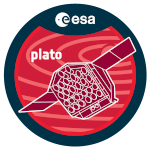PLATO (PLAnetary Transits and Oscillations of stars) is ESA's M3 mission and designed to detect and characterize extrasolar planets by high-precision, long-term photometric and asteroseismic monitoring of a large number of stars. PLATO will detect small planets around bright stars, including terrestrial planets in the habitable zone of solar-like stars. With the complement of radial velocity observation from ground, planets will be characterized for their radius, mass, and age with high accuracy. PLATO will provide us with a large-scale catalogue of well-characterized small planets up to intermediate orbital periods, relevant for a meaningful comparison to planet formation theories and to better understand planet evolution. It will make possible comparative exoplanetology to place our solar system planets in a broader context. In parallel, PLATO will study (host) stars using asteroseismology, allowing us to determine the stellar properties with high accuracy, substantially enhancing our knowledge of stellar structure and evolution.
PLATO is scheduled for a launch date end 2026. Development of the spacecraft and the payload, which includes the serial production of its 26 cameras, has started. This presentation will provide a general overview of the PLATO goals and its expected science and instrument performance.

 PDF version
PDF version
